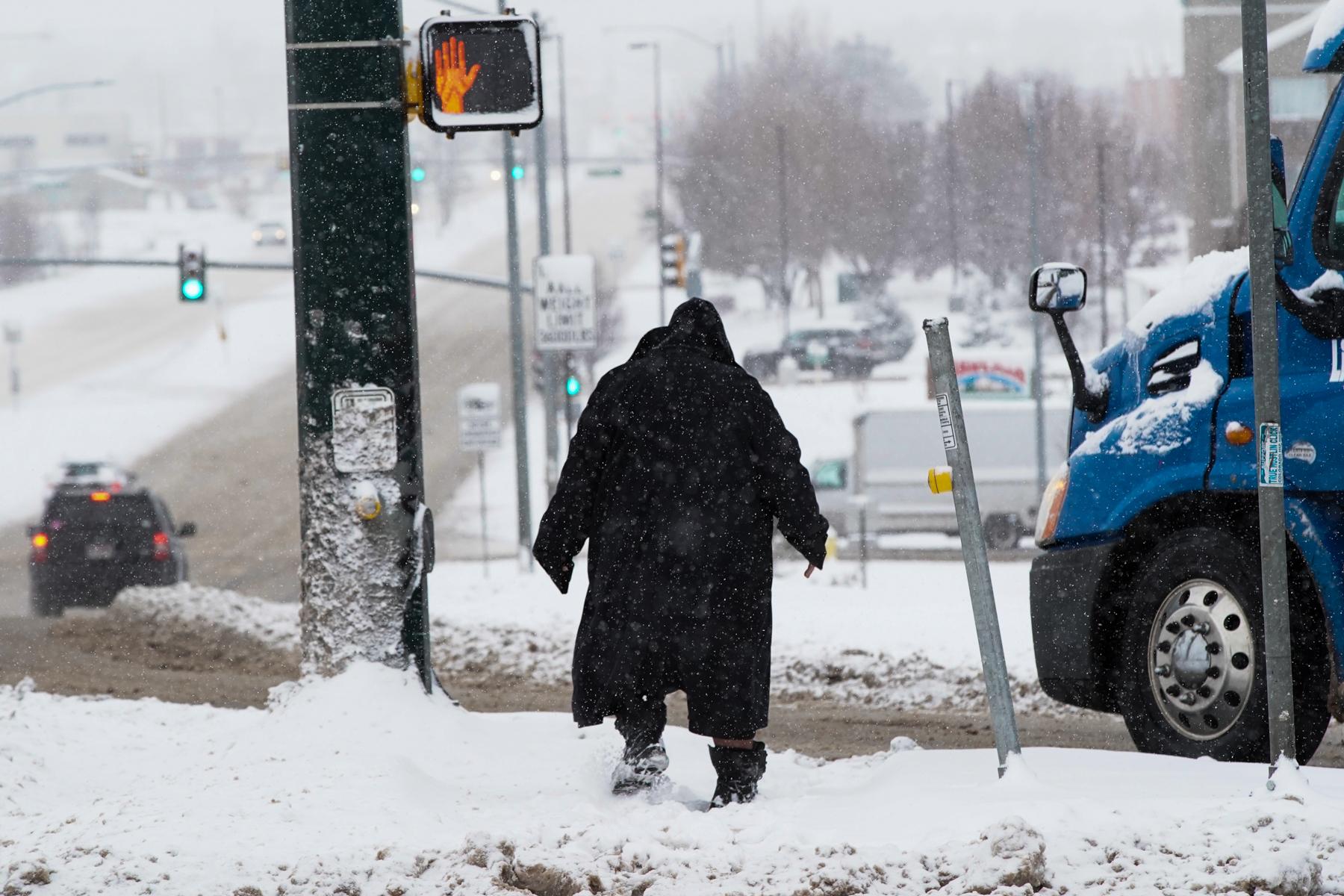
This winter season is dealing Colorado’s Front Range and other parts of the state another dip into sub-zero weather — and that is causing folks to seek medical treatment for frostbite.
“We just keep getting hit with these cold spells that are colder and longer,” said Dr. Jean Hoffman with University of Colorado's Emergency Department and UCHealth’s Burn and Frostbite Center, part of its intensive care unit. “So we're seeing more and more patients that are afflicted with frostbite.”
The latest venture into extreme cold comes courtesy of the state’s second winter blast of Arctic air after a similar shot nailed the state ahead of the holiday season last month.
The Burn and Frostbite Center takes patients from around the Rocky Mountain Region. It's already had 34 hospital admissions so far this year — more than all of last winter.
Freezing causes frostbite, defined by the CDC as a loss of feeling and color in the affected areas, most often the nose, ears, cheeks, chin, fingers or toes. It can damage body tissues permanently. The most severe cases can result in amputation.
Frostbite can come on quickly, said Hoffman, in a half hour when the temperature is 5 degrees Fahrenheit and the wind speed is 30 mph. At -5 degrees Fahrenheit and a wind speed of 30 mph, the condition will happen in 10 minutes.
“We call this ‘frostbite season’ just among the providers because the cold always brings these types of injuries, but because it is so cold, it decreases the amount of time you need to be outside to sustain a frostbite injury,” Hoffman said.
A few groups are typically disproportionately affected, she said: those experiencing homelessness or who have substance use disorder, also the old and young.
Public warming centers give people a place to go to get out of the cold, but not everyone can easily access one close by.
One tip that might seem like a no-brainer in Colorado, she said, keep gloves in your car and in your pockets. What would you do if you had to change a tire when the temperature crashes below zero and it’s windy?
“Just preparing because in these ultra-cold temperatures, you really need to protect your hands and then feet,” Hoffman said.
Another major danger, Hoffman said, getting parts of your body wet in extreme cold.
“Wet is the enemy of the burn surgeons because wet cold is even worse,” Hoffam said. “So if you have soaked boots, soaked gloves, you really wanna make sure to get those off quickly because those will increase your risk of getting frostbite injury.”
One of the biggest risks of frozen hands and feet is amputation. “People are severely debilitated if they get to the point that their frostbite needs amputations,” she said. “And I think that the thing that is probably the most heartbreaking about this is the level of debility.”
Experts urge avoiding walking on frostbitten feet. If the skin appears blue or blisters form when the skin warms, best advice is to seek medical attention as soon as possible to limit tissue damage.
The emergency department at Denver Health, the state’s primary safety net hospital, reports hundreds of patients each year arriving for what’s defined as cold exposure. In 2022, Denver Health recorded 274 patients being treated for frostbite or hypothermia, abnormally low body temperature, the highest figure in the last four years.
According to the CDC, when exposed to cold temperatures, the body starts to lose heat faster than it can be produced. Prolonged exposure to cold will eventually use up a body's stored energy, resulting in hypothermia.
The UCHealth Burn and Frostbite Center sees 30 to 60 admissions annually and consults on between 90 and 100 additional cases at hospitals across the region. Its busiest year was 2020 when UCHealth saw 83 frostbite admissions.
UCHealth’s Burn and Frostbite Center offered tips if someone suspects frostbite due to cold exposure:
- Prevent additional exposure to the cold.
- Rewarm the affected area in warm (not hot) water for 15-30 minutes.
- Keep the affected area elevated to reduce swelling.
- Use over-the-counter pain medication like ibuprofen if the affected area is painful upon warming.
- Try to avoid walking on frostbitten feet.








